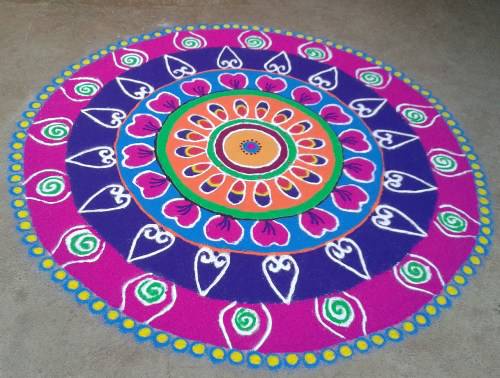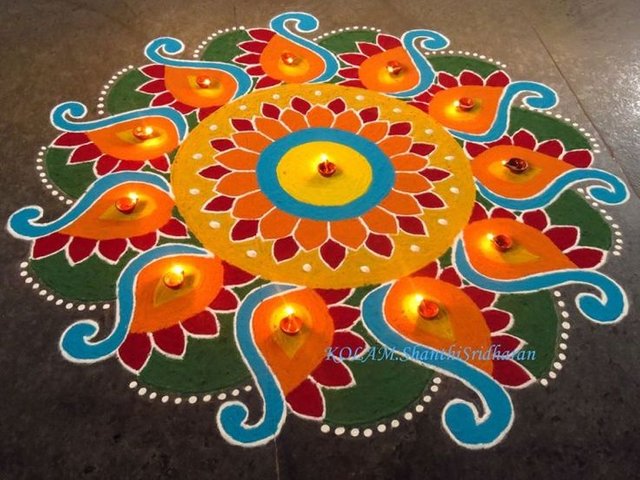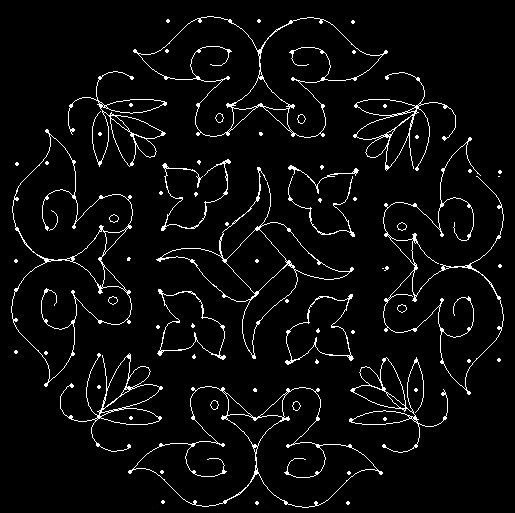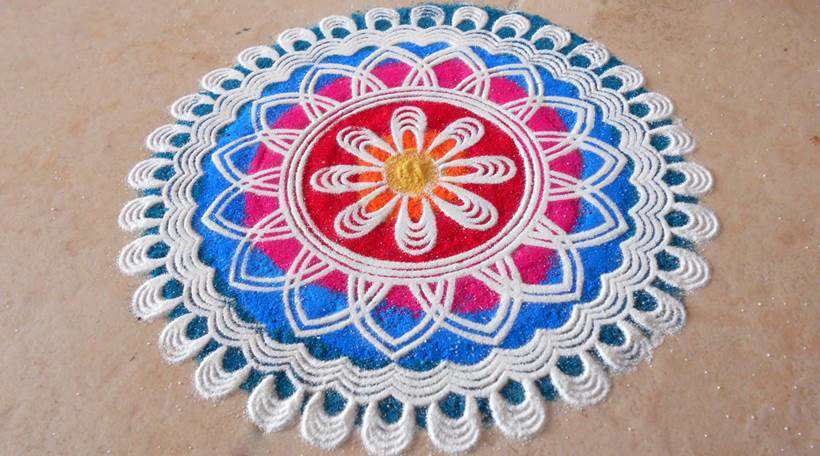INDIAN RANGOLI

Depending on which part of India one is from, there are different reasons based on local culture for drawing rangoli. But I would like to limit the scope of this article to the original form of rangoli and it’s scientific reason, before it was passed down the generations which has witnessed localization and adaptions over time.

Notice that they are symmetric around both X & Y axis, mostly have rounded edges and appear to be combination of several simpler designs superimposed over each other.
Before we get into the details of the rangoli design, I would like you to recollect the concept of harmonics in sound waves studied during high school physics course. Recollect that sound is actually made up of several harmonics where each harmonic corresponds to a certain frequency.
.jpg)
When the right harmonics are combined, we get pleasing sounds that soothes the mind and calms us. It becomes melodious music. (Classical music with complex harmonics is an example)
This is in the sound domain. i.e The harmonic vibration patterns manifests into pleasing sounds which can soothe the mind. Similarly, in the visual domain, we have corresponding harmonics for every frequency which when combined, leads to artistic patterns which are pleasing to see and have a calming effect. There is a separate field of science called Cymatics which deals with the relationship between vibrations and the geometric patterns corresponding to it.
Here is a brief video about Cymatics and how vibrations affect us:
In order to experiment in Cymatics, all that you need is a metal plate over which some sand is sprinkled and a frequency generator which vibrates the metal plate. When it is set to a certain resonant frequency, the metal plate vibrates in such a way that all the sand particles get aligned in geometric pattern. For example, here are a few patterns which emerge for different frequencies and they appear just like the rangolis we draw in India:

.jpg)

Just like how a vibration can lead to a geometric pattern, the reverse is also possible. When a person looks at such a geometric pattern, it manifests into vibrations inside the mind of the observer which in turn calms the mind. And this is exactly what the rangoli does to one’s mind. i.e It has a soothing effect. Scientists & Doctors have extended it further and created a new medical field called Cymatherapy in which highly complex vibrations are converted into sound patterns, which in turn can be used to heal a person’s body and emotions. Just like how we have Fourier transform which translates a given vibration pattern into waves in the time domain and corresponding spectrum in frequency domain, we have Cymatics which is in the visual domain and Cymatherapy in the corresponding sound domain.
It is a well established fact in neuro-science that the brain actually responds to visual patterns and depending on the shapes & patterns, it can have different effects on the mind. There have been research publications on how even a simple geometric shape like a triangle can activate neural circuitry and affect emotions. Not just shapes, but colors also play a role in stimulating the brain. Modern science is still evolving and lot of research work is going on in this field with new discoveries related to visual patterns, brain stimulation etc. Interested readers can learn more about these topics and it’s advancements by reading reports & books by the renowned neuro-scientist V.S.Ramachandran (VSR) who has delivered TED talks, seminars & neuro-analysis of art including one on Indian art and neuroscience.
The reason a rangoli is drawn at the entrance of a house is because of it’s calming effect on a visitor who is just about to enter into the house. It manifests into vibrations (brainwaves) in the visitor’s mind, putting him at ease, making him comfortable and happy.
Here is a home video of a simple experiment which demonstrates the relationship between several frequencies of vibrations and their corresponding complex geometric patterns in the form of rangoli. Must watch video:
Hence, rangoli is not just an art but actually a science of vibration pattern which was discovered by Indians thousands of years ago and been made a part of the culture for spiritual, aesthetic & scientific purposes.
